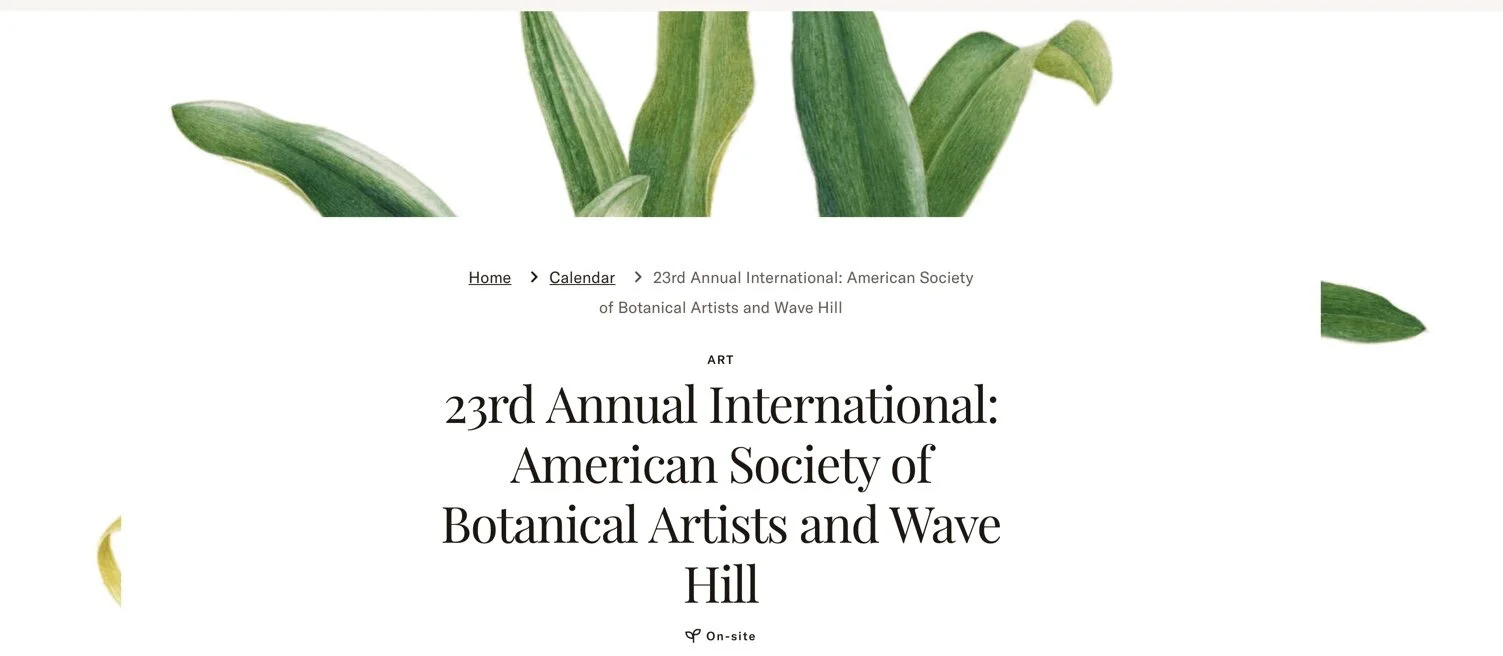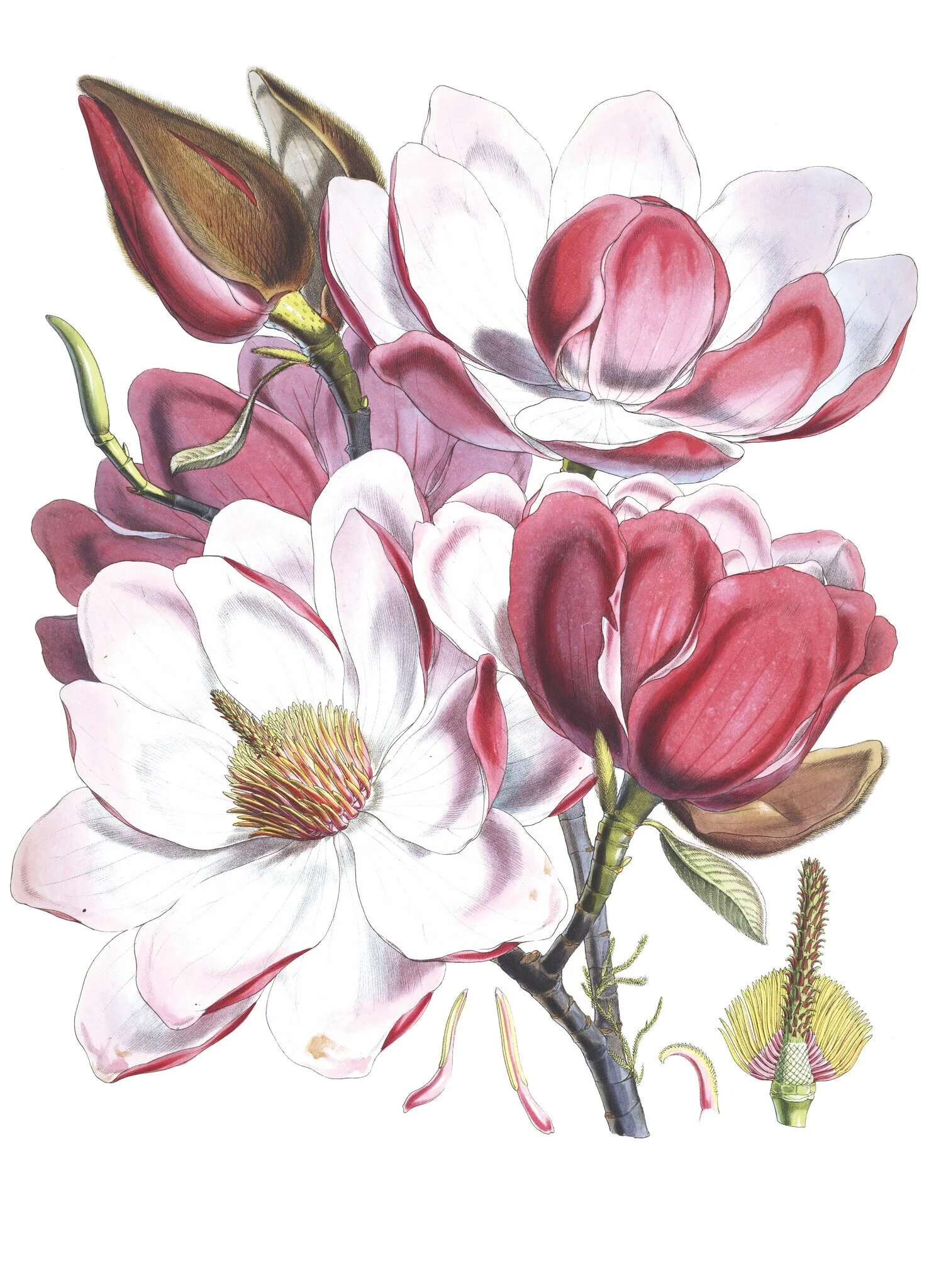Color: Challenges and Rewards By Susan Fulton
Looking out my window at the snow covered subdued outdoor palette of winter, it is hard to believe that in a short time spring will arrive with its glorious bulbs, flowering trees, and emerging buds. There is something uplifting and joyous about being outside enjoying the riotous colors of spring. Clear bright color has long attracted observers to art—Titian was known as a “colorist” of great renown and the Impressionists, who used bright colors on a white canvas, continue to draw large crowds of observers. Modern botanical artists are pushing the boundaries of traditional plant portraits by presenting larger and more lush interpretations of plants in a wider variety of mediums. Deciding how to illustrate a plant and what colors to use are some of the biggest challenges facing us as botanical artists. Realistic color applied in a way that mimics a plant is one of the objectives, but how to achieve this in a painting?








